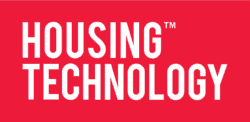Post-pandemic, the way housing teams work and engage with tenants is set to look different. Greg Burnham, Datagraphic’s Aceni Hybrid Mail product manager, discusses some of the opportunities and challenges for IT leaders with mobile technologies and remote working.
Catalyst for digital transformation
When we were told in March 2020 to “work from home if you can”, it was a shock to some people; for others, it served as proof that work is what you do, not where you do it.
Over the last decade, work patterns have been changing, driven by technology. Connectivity today makes it possible for employees to use many devices with 4G, 5G or wifi to work in the park, café, spare room or office, and to respond in minutes to emails, video calls or even upload letters to a hybrid mail service for delivery to tenants.
Shifting attitudes to technology and work
For most employees, technology is an enabler. It lets them work from home, commute less and improve their work/life balance. However, for some people, isolation and burnout are problems owing to less social contact and/or longer hours.
What’s emerging as the best approach is hybrid working – a mix of remote and office work – and it’s something organisations will want to embrace.
Business applications for hybrid working
A common limiting factor for flexible working has been access to real-time information. Too often, legacy systems, on-premise infrastructure and software licensing restrict remote employee access to information, but the pandemic has proven to be a springboard.
Tasked with deploying quick-fix connectivity for home workers during the pandemic, IT teams now have better knowledge to scope and support secure and accessible solutions.
Delivering this digital transformation can be a sizeable project, but complete system changes aren’t always needed. Using cloud-based SaaS technology, which is easy for most IT teams to deploy and scale, can deliver front-end functionality at the same time as integrating with your existing business applications for a less disruptive change.
It’s no surprise then that API use is increasing, proving its worth by interfacing data between cloud SaaS and traditional applications.
The metrics for success
As people work more flexibly, housing leaders will undoubtedly need to rethink the quantitative and qualitative metrics managers use. The emphasis is likely to shift from monitoring employees’ hours to targeting the work achieved.
Other important considerations are employee wellbeing and professional development. Flexible working can create feelings of isolation and burnout, and remote workers can feel overlooked for promotions.
Does mobile technology need to be new?
When considering mobile technology for housing applications, don’t be afraid to look at established solutions; a low-cost example is QR codes. Despite being around for years, it took the combination of device manufacturers adding QR-code scanning to their on-device cameras and the NHS to use them for track and trace for QR codes to gain acceptance.
The more widespread use of QR codes is now being used by Golding Homes. The housing provider is already using Datagraphic’s Aceni Hybrid Mail to print and post statements, but it now also wants to encourage its tenants to self-serve more via its online portal. By adding QR codes to printed statements – one for tenants’ rent payments, another for portal sign-ups – Golding Homes is using print to drive digital engagement.
Using QR codes is inexpensive, and by making these simple additions, Golding Homes has seen a 20 per cent increase in online payments immediately following its addition of QR codes from April 2021 onwards.
Where will we be five years from now?
In a recent statement, the UK government said, “What we’re consulting on is making flexible working a default option unless there are good reasons not to.”
It’s unclear if flexible working will become the default by law, but indications are that many teams will be hybrid working in some form. To respond to this challenge, housing providers will need agile technologies and responsive third-party vendors; the future will be about solutions that can be deployed and scaled rapidly.
Use of cloud-based services will continue to rise, to support rapid access to growing amounts of data. And with that increase in data comes risk; more access points into systems could create more vulnerabilities so stronger information security will be needed to ensure data is available but not open to threats.
And there will be opportunities with mobile technology and 5G-connected smart devices to support teams and tenants better – for example, housing assets such as boilers that report faults and allow repair teams to fix them remotely without a home visit.
In my view, years from now, housing IT teams will need to support an incredibly varied, responsive and interactive workforce. But, with an ever-growing number of credible technology partners, the possibilities are endless.
Greg Burnham is the Aceni Hybrid Mail product manager at Datagraphic.

